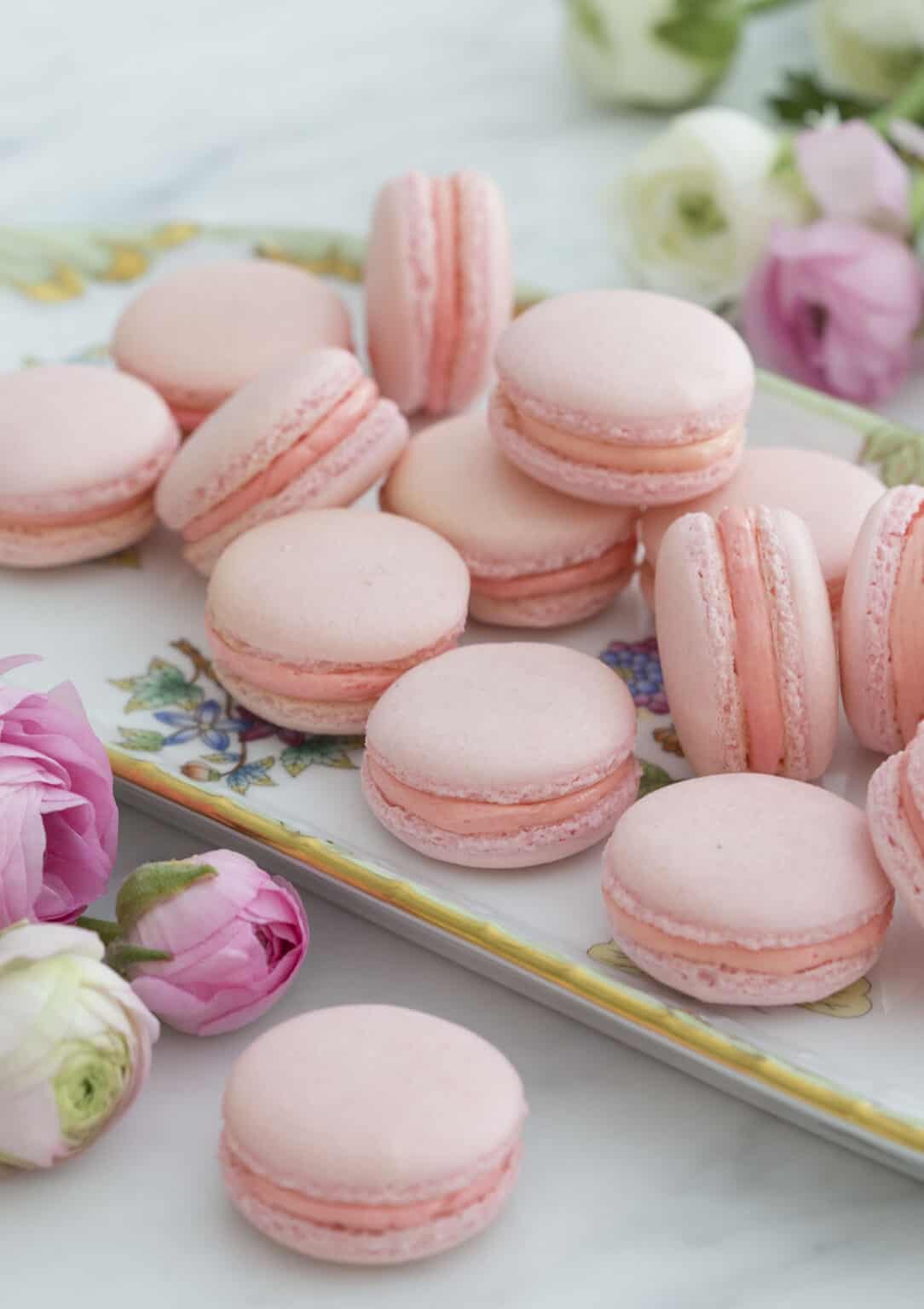French cuisine is famous around the world for its sophistication and rich flavors, and their cookies are no exception. You will discover a delightful variety of cookies, ranging from delicate, crispy treats to soft, flavorful bites.
Whether you’re a seasoned baker or just getting started, exploring French cookies can add a touch of elegance to your baking repertoire. These recipes highlight the unique textures and tastes that make French cookies a cherished part of the culinary tradition.
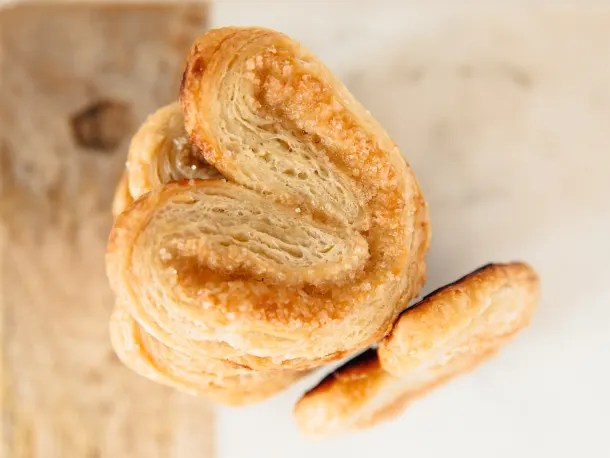
1) Palmiers
Palmiers, also known as elephant ears, are a classic French pastry made from puff pastry and sugar.
To start, you’ll need puff pastry and coarse-grained sugar like demerara.
Roll out the puff pastry on a lightly floured surface. Sprinkle it evenly with sugar for texture and flavor.
Fold the left and right sides of the pastry to the center so they meet in the middle.
Fold the dough in half again lengthwise. This gives the palmier its distinctive shape.
Preheat your oven to around 400°F (200°C) and line a baking sheet with parchment paper or a Silpat mat.
Cut the folded pastry into 1/4-inch slices and place them on the baking sheet, leaving space between each one.
Bake for about 12 to 14 minutes until the edges are light golden brown. Flip the palmiers with a spatula and bake for another 5 minutes.
Remove from the oven and let them cool before enjoying these crispy, sweet treats. Palmiers are perfect for tea time or as an elegant dessert.
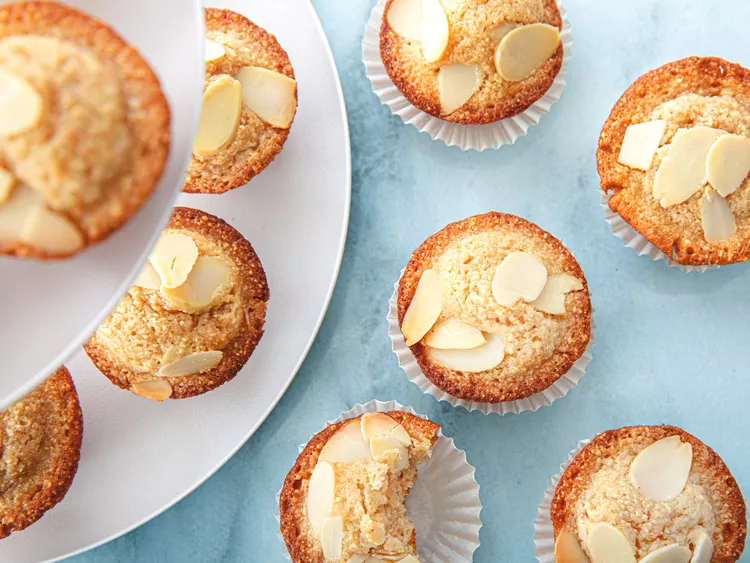
2) Financiers
Financiers are small, almond-flavored cakes with a crisp exterior and a moist, buttery interior. They are traditionally baked in rectangular molds, which give them a unique, bar shape resembling a gold bar.
You start by preheating your oven to 350°F (175°C). Grease your financier molds with butter and dust them lightly with flour to prevent sticking.
To make the batter, whisk egg whites briefly until they are frothy. In another bowl, mix together sugar, all-purpose flour, almond flour, and a pinch of salt.
Next, you will need to make brown butter. Melt unsalted butter in a saucepan over medium heat. Continue cooking until the butter turns a caramel color. Strain the brown butter to remove any dark sediments, then let it cool down slightly.
Gently combine the dry ingredients with the egg whites, then slowly add the brown butter. Stir the mixture until smooth. Pour the batter into the prepared molds, filling them about three-quarters full.
Bake the financiers for 15-20 minutes, or until they are golden brown and a toothpick inserted comes out clean. Let them cool in the molds for a few minutes before transferring them to a wire rack to cool completely.
Financiers are best enjoyed fresh and can be served plain or with a dusting of powdered sugar. They make a perfect afternoon treat with tea or coffee.
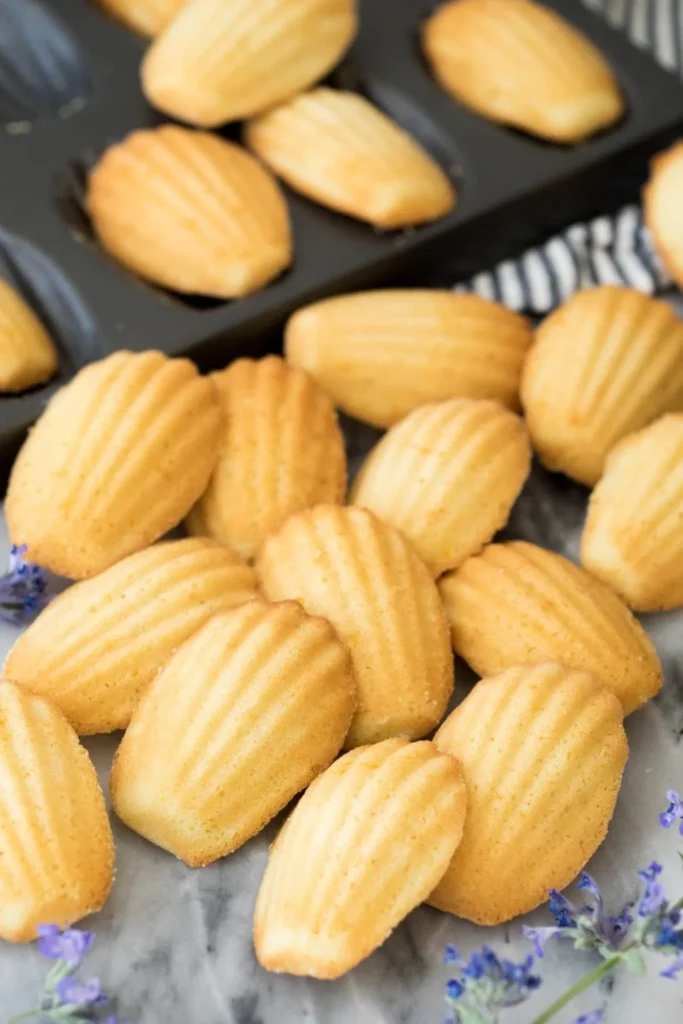
3) Madeleines
Madeleines are small, shell-shaped sponge cakes that originate from France. They are known for their light and airy texture, with a slight crispness on the outside. You will often find them flavored with vanilla, lemon, or almonds.
To make Madeleines, you need a special pan with shell-shaped molds. Start by melting butter and letting it cool. Then beat eggs, sugar, and vanilla until the mixture is light and fluffy.
Next, fold in flour and baking powder gently to avoid deflating the batter. Carefully add the cooled melted butter. Cover the batter and refrigerate it for at least an hour. This helps develop the characteristic hump on the back of each Madeleine.
Preheat your oven to the right temperature—usually around 375°F (190°C). Butter and flour the madeleine molds to prevent sticking. Spoon or pipe the batter into each mold, filling them about three-quarters full. Bake for 10 to 12 minutes or until the edges are golden and the tops spring back when pressed.
After baking, invert the pan to release the Madeleines. Let them cool slightly on a wire rack. Dust with powdered sugar if you like. Madeleines are best enjoyed fresh but can be stored in an airtight container for a few days.
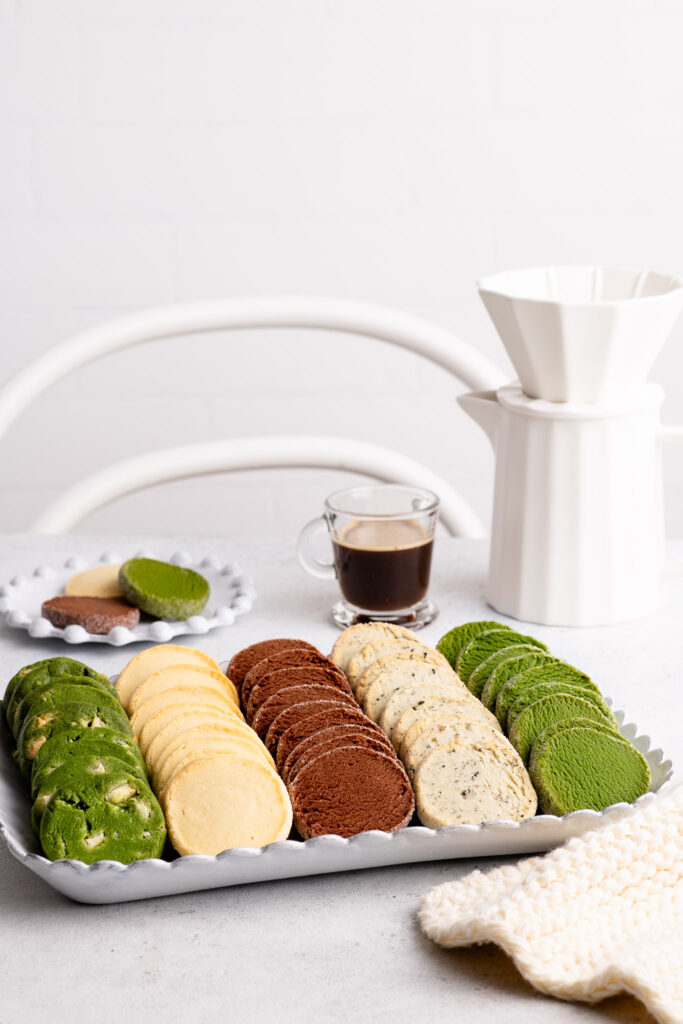
4) Sablés
Sablés are classic French butter cookies known for their delicate texture. These cookies get their name from the French word for “sand,” which hints at their crumbly, sandy texture.
To make Sablés, you start by creaming butter until it’s smooth. Then you gradually add sugar and a pinch of salt.
Mixing in egg yolks and vanilla adds richness and flavor. Finally, you incorporate flour. The dough should be soft but not sticky.
Chill the dough in the refrigerator until firm. This step makes it easier to cut the dough into shapes.
Bake the cookies at around 350°F (177°C) until they are lightly golden. Let them cool on the baking sheet for a few minutes before transferring them to a wire rack.
You can serve Sablés plain or dusted with powdered sugar. They pair well with tea or coffee.
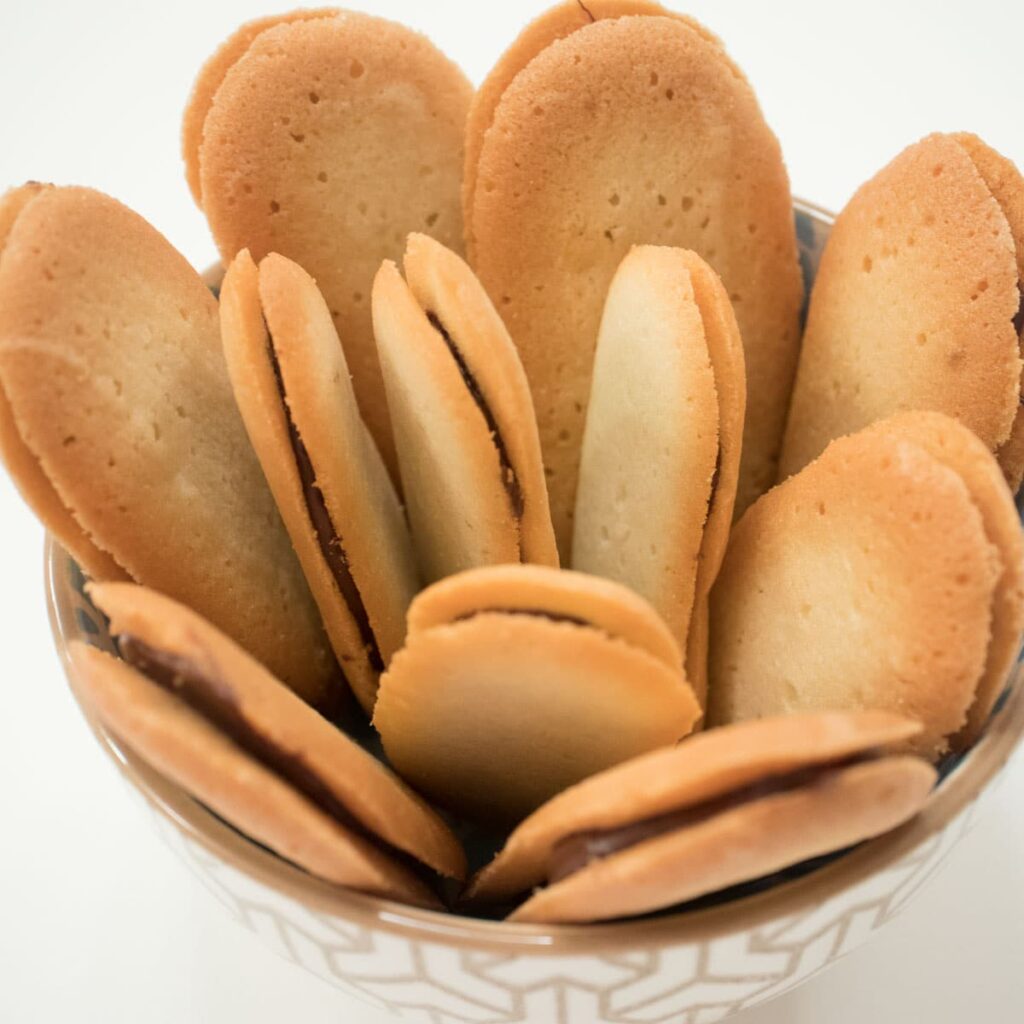
5) Langues de Chat
Langues de Chat, or Cat’s Tongue cookies, are thin and delicate treats named for their shape. They have a crisp texture and a light, buttery flavor. These cookies are great alone or paired with ice cream.
To make Langues de Chat, you need basic ingredients like butter, sugar, egg whites, flour, and vanilla. Start by creaming together butter and sugar until smooth. Then, beat in egg whites one at a time.
Add flour and a pinch of salt to the mixture. Stir to combine. Pipe the batter onto a baking sheet lined with parchment paper. Aim for thin, even strips about 3 inches long.
Preheat your oven to 375°F (190°C). Bake the cookies for 8-10 minutes, or until golden around the edges. Cool them on a wire rack.
For variety, you can dip the cooled cookies in melted chocolate. Some people also use them as sandwich cookies, with a layer of chocolate or jam between two Langues de Chat.
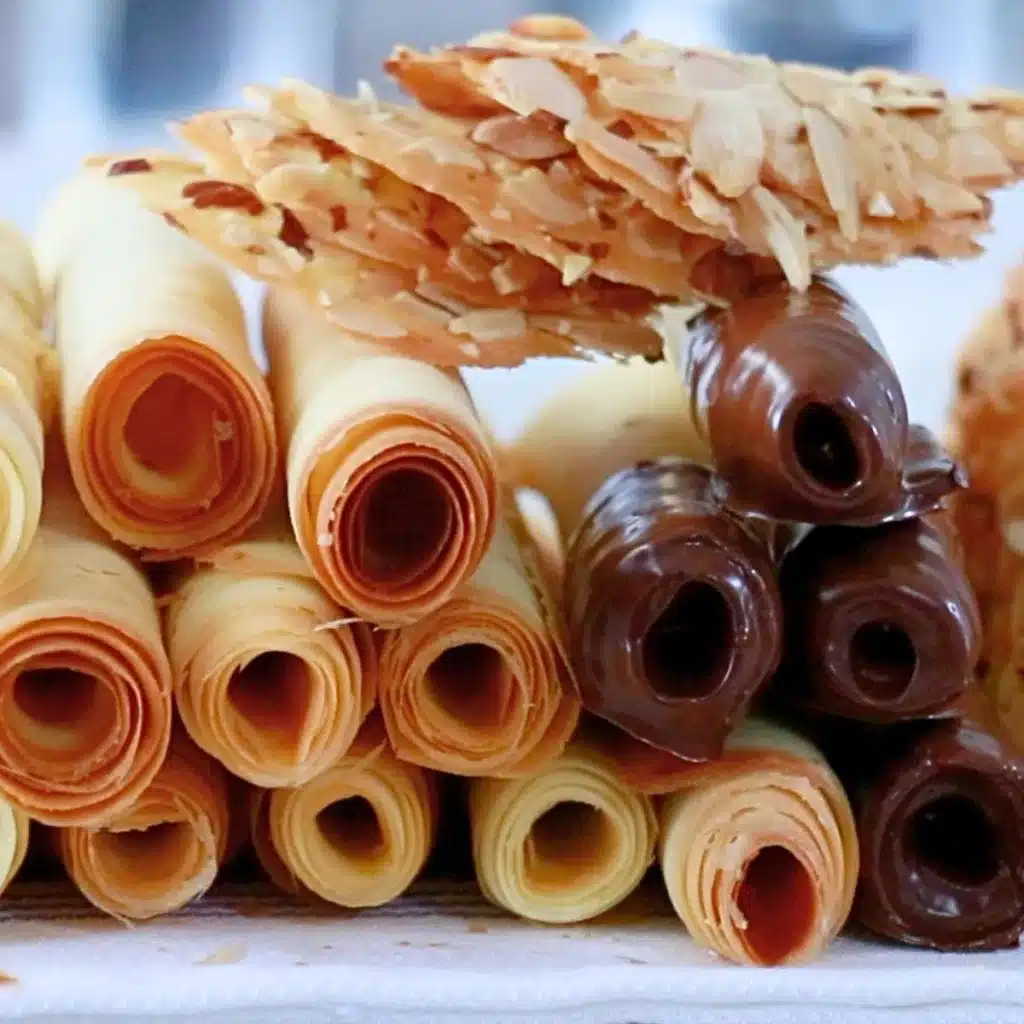
6) Tuiles
Tuiles are thin, crisp French cookies named after the curved roof tiles they resemble. These cookies are light, delicate, and have a satisfying crunch.
To make tuiles, start by whisking together egg whites and sugar until the mixture is combined and slightly frothy. Then, add melted butter and continue whisking.
Next, stir in flour and vanilla until the batter is smooth. Chill the batter in the fridge for about 10 minutes. This helps it spread thinly.
Preheat your oven to around 375°F. Lay parchment paper on a baking sheet. Scoop small amounts of batter onto the parchment, spacing them a few inches apart.
Use an offset spatula to spread the batter very thin. Bake for a few minutes until the edges are golden. Be ready to shape the tuiles immediately after they come out of the oven.
While the tuiles are still warm, you can drape them over a rolling pin or any curved surface to give them their signature shape. Let them cool and harden.
Enjoy these crispy, elegant cookies as a light treat or with a cup of tea.
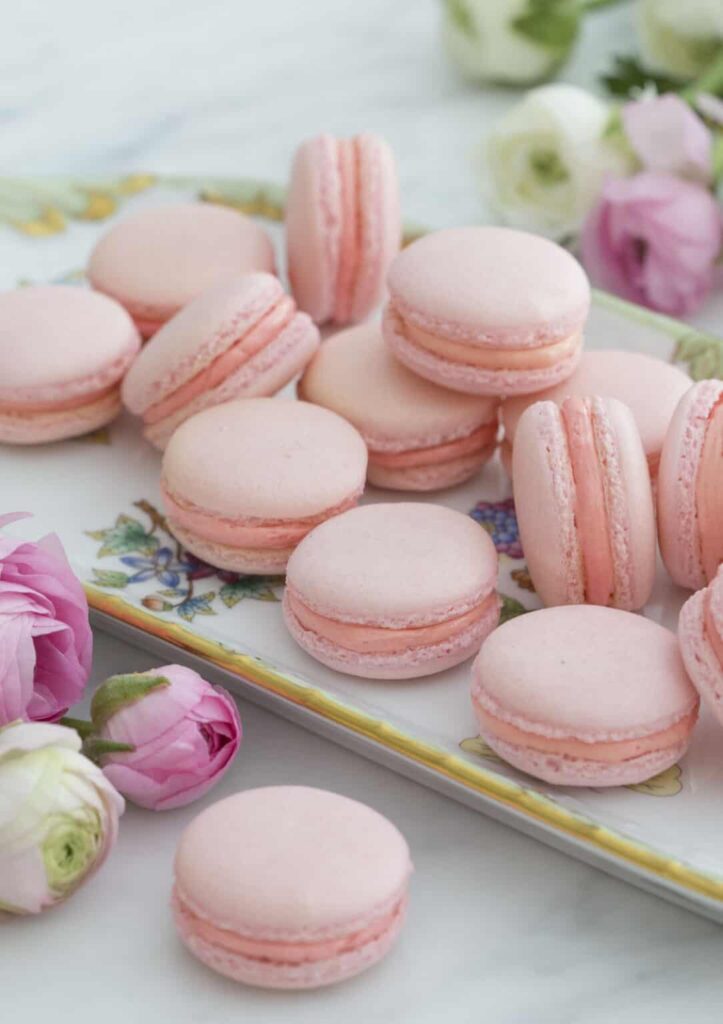
7) Macarons
Macarons are delicate French cookies with a crisp shell and a soft, chewy center. They come in a variety of flavors and colors. The basic ingredients you need include almond flour, powdered sugar, and egg whites.
To start, sift together almond flour and powdered sugar. This helps create a smooth texture. Next, beat egg whites until they form stiff peaks. Gradually fold in the dry ingredients to create a batter.
Piping the batter onto a baking sheet is crucial. Use a piping bag to make small, even circles. Let the piped batter sit until a skin forms on top. This can take about 30 minutes to an hour.
Bake the cookies at a low temperature, around 300°F to 325°F. This helps them rise properly and form a classic “foot.” Cool the baked shells completely before filling with your choice of buttercream, ganache, or jam.
Store macarons in an airtight container in the refrigerator. They can be enjoyed for several days. These tiny treats are perfect for special occasions or as a delightful snack.
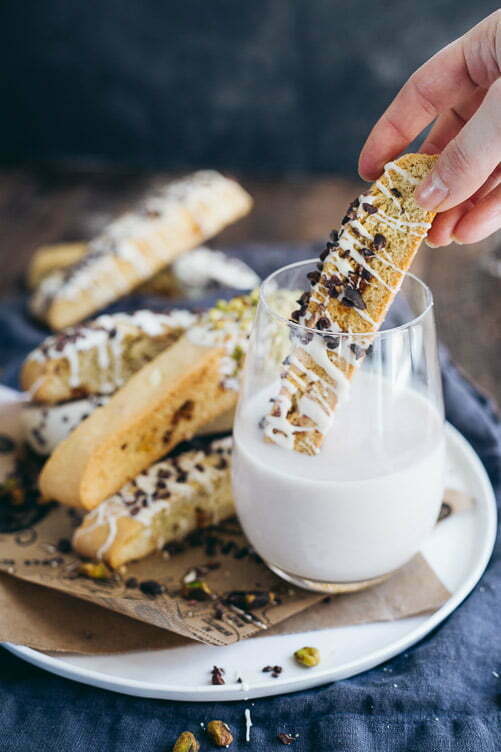
8) Biscotti Parisian
Biscotti Parisian is a delightful twist on the classic Italian cookie, merging a bit of French flair into the mix.
To start, you will need basic ingredients like sugar, eggs, and almond or vanilla extract. First, mix these ingredients well to form a smooth batter.
Scoop the batter into logs and place them on a baking sheet lined with parchment paper. Bake the logs until they are firm and golden brown.
After baking, let the logs cool slightly. Then, cut them into 1/2 inch slices. Lay the slices on their sides and bake again until each side is crispy and golden.
If you’re feeling creative, try adding a touch of French elegance by sprinkling the biscotti with a bit of sugar before the second bake. This gives them a slight crunch and a delicate sweetness.
Serve your Biscotti Parisian with a cup of coffee or tea. They make a perfect treat for any time of day. Enjoy the crispy texture and rich flavor with every bite.
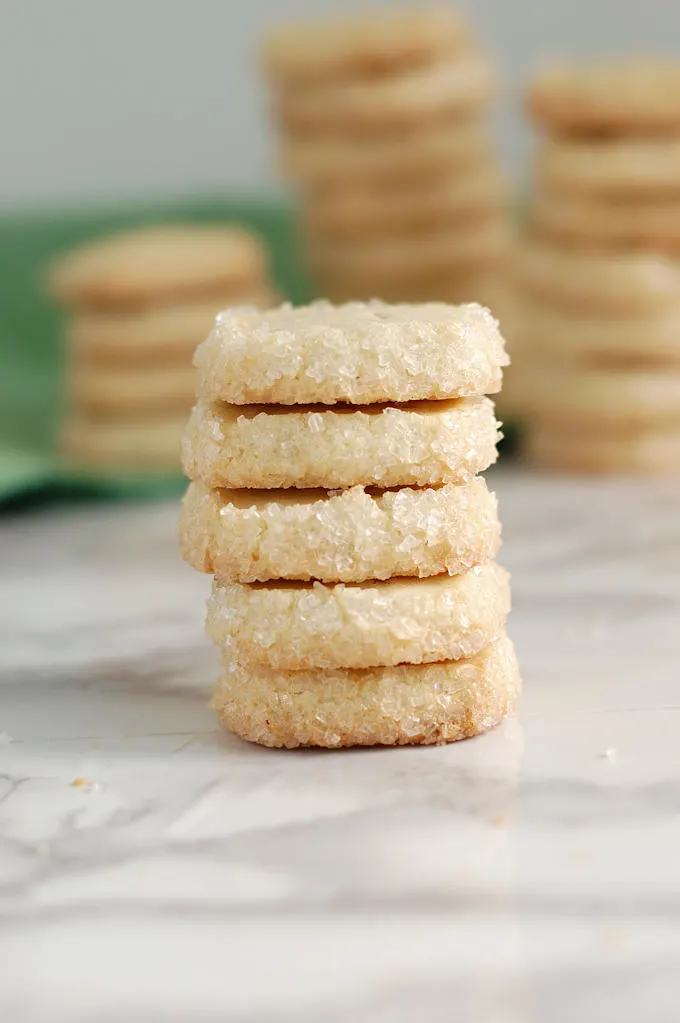
9) Diamants
Diamants, also known as French diamond cookies, are a classic treat. They are known for their buttery and crumbly texture.
You start by beating butter and sugar until creamy. Then, you mix in vanilla, flour, and salt until fully blended. The dough forms into a smooth ball.
Shape the dough into a log and roll it in crystal sugar. This gives Diamants their signature sparkle.
Chill the dough to make slicing easier. Cut the log into 1/2-inch thick slices.
Bake the cookies until the edges are golden brown. They won’t spread much in the oven, so keep them spaced closely.
Diamants are simple yet delicious. Their rich buttery taste pairs well with tea or coffee, making them a perfect snack or dessert.
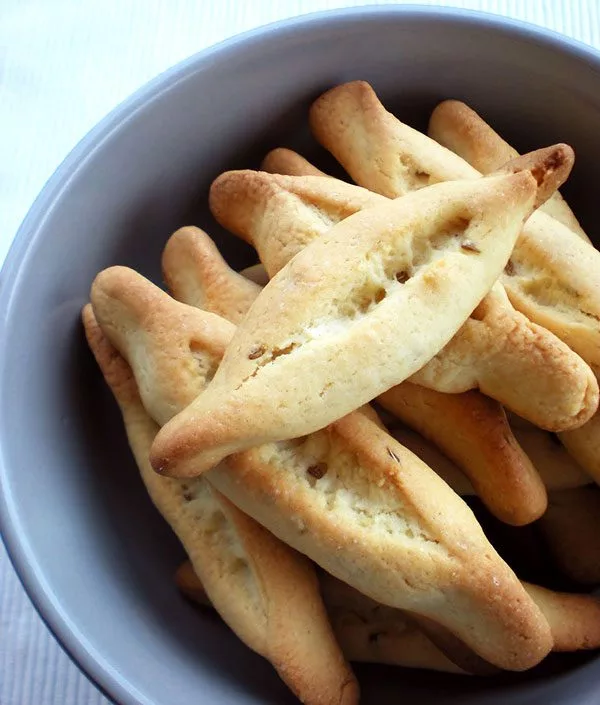
10) Navettes
Navettes, also known as “Shuttle Cookies,” are a traditional treat from Marseille, France. These cookies have a unique boat-like shape and are usually flavored with orange blossom water.
The name “navette” means “shuttle,” a nod to their boat shape. Legend says they symbolize the boat that brought Saint Lazarus and the two Marys to France.
To make these cookies, you mix sugar and softened butter in a large bowl until you get a sandy texture. Then, add eggs and flavoring one at a time. Gradually work in the flour with your fingertips.
Navettes have a slightly firm and crunchy texture. They are an acquired taste due to the strong orange blossom flavor. Some versions use almond flavoring instead.
These cookies are often enjoyed with tea or coffee. They are common during religious festivals in Marseille and are a beloved part of the local culinary heritage.
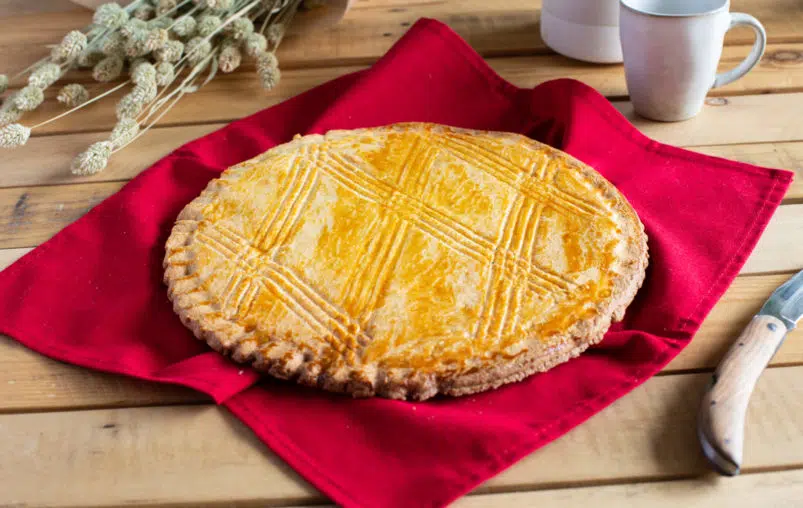
11) Broyé du Poitou
Broyé du Poitou is a traditional shortbread from the Poitou region in France. It’s known for its crumbly texture and rich, buttery flavor.
This treat usually contains simple ingredients like butter, sugar, flour, eggs, and a pinch of salt. Some recipes call for brandy or sliced almonds for added flavor.
To make Broyé du Poitou, you first cream the butter and sugar until light and fluffy. Then, mix in the eggs and flour until a dough forms.
Once the dough is ready, you roll it out to about half an inch thick. You can use a round baking dish or a pie plate to shape it.
Baking at a moderate temperature, typically 350°F, ensures the shortbread cooks evenly. It’s often marked with a criss-cross pattern before baking to give it a distinct look.
Broyé du Poitou is best served in broken pieces. It pairs well with a hot drink like coffee or tea. This cookie is loved for its simplicity and delicious taste.
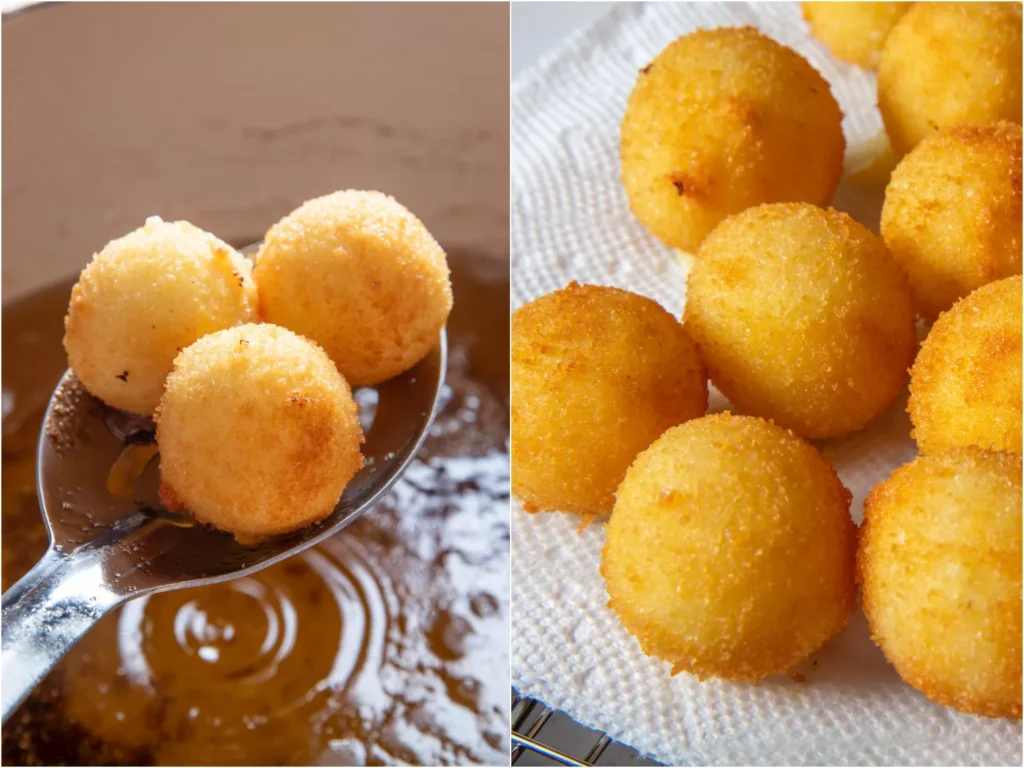
12) Le Croquet
Le Croquet is a classic French cookie, often enjoyed during festive occasions. These cookies are crispy and almond-flavored, offering a satisfying crunch with every bite.
To prepare Le Croquet, you need basic ingredients like flour, sugar, eggs, and almonds. Start by mixing the dough until it is sticky. If needed, you can add flour to make it easier to handle.
Next, divide the dough into portions and shape each into logs. These logs are then placed on a baking sheet, usually lined with parchment paper. Bake the logs until they are golden and firm.
After baking, let the logs cool slightly. Once they are cool enough to handle, slice them into thin pieces. Return these slices to the oven for a second bake, ensuring they become even crunchier.
Le Croquet pairs well with coffee or tea, making it a delightful treat for afternoon breaks. The almond flavor is subtle yet distinct, adding a unique taste to the cookie.
These cookies are simple to make and can be stored for several days. This makes them a great choice for preparing in advance. Enjoy the crispiness and flavor of Le Croquet, and you’ll see why they are a beloved French tradition.
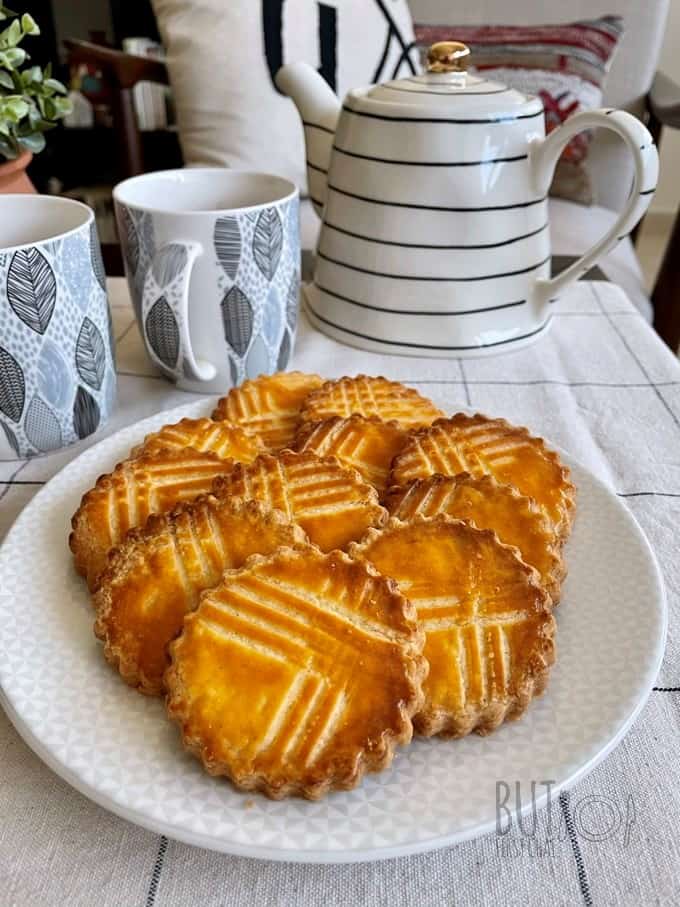
13) Galettes Bretonnes
Galettes Bretonnes are traditional butter cookies from Brittany, France. They are known for their rich and buttery flavor with a hint of salt.
To make these cookies, you need softened butter, sugar, vanilla, salt, egg yolk, and flour. First, cream the butter and sugar together until light and fluffy. Add vanilla and salt, then mix in the egg yolk.
Next, add the flour and mix until it forms a crumbly texture. Use your fingers to bring the dough together into a soft ball. Chill the dough for at least an hour to make it easier to handle.
Preheat your oven to 355°F (180°C) and line baking sheets with parchment paper. Roll out the dough to 1/8 inch (about 3mm) thickness on a floured surface. Cut out cookies with a round cutter and place them on the prepared baking sheets.
Bake for 12-15 minutes or until the edges are golden brown. Let the cookies cool on the baking sheets before transferring them to a wire rack. Enjoy your homemade Galettes Bretonnes with a cup of tea or coffee.
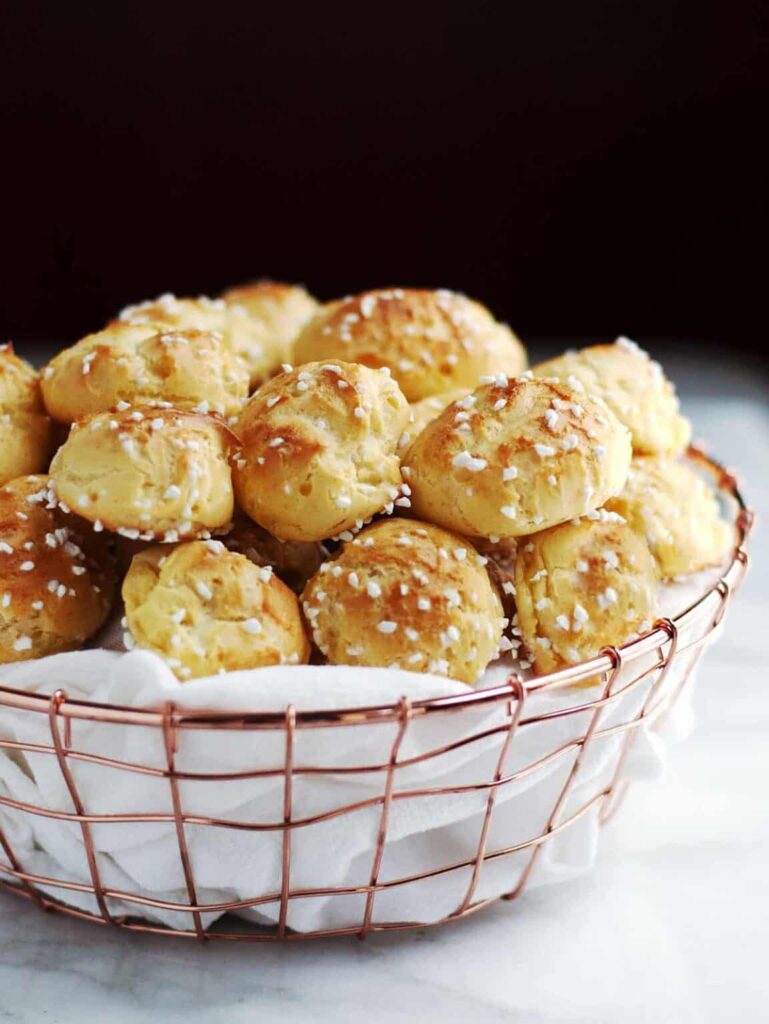
14) Chouquettes
Chouquettes are delightful French sugar puffs made from choux pastry. They are light, airy, and perfect for a quick snack or dessert. These small puffs are traditionally sprinkled with pearl sugar, giving them a sweet, crunchy topping.
To make chouquettes, you will first need to preheat your oven. Some recipes suggest 375°F or 425°F. Line baking sheets with parchment paper or a silicone baking mat.
In a small saucepan, combine water, butter, sugar, and a pinch of salt. Heat over medium, stirring until the butter melts. Remove the saucepan from the heat, then quickly add flour. Stir vigorously until the mixture leaves the sides of the pan and forms a smooth ball.
Let the dough cool for a few minutes. Beat in eggs one at a time until the dough is smooth and glossy. Transfer the dough to a piping bag with a round tip. Pipe small rounds onto the prepared baking sheets.
Sprinkle generously with pearl sugar. Bake until the chouquettes are golden brown and crisp. Avoid opening the oven door during baking to ensure they rise properly. Enjoy your fresh chouquettes warm or at room temperature.
Understanding French Cookies
French cookies are known for their unique flavors and textures, deeply rooted in tradition and regional diversity.
History and Origins
French cookies have a rich history that ties into the broader story of French cuisine. Early recipes for these treats date back to medieval times.
Cookies like macarons and biscuits were often enjoyed by royalty and commoners alike. Sugar and spice became more accessible, leading to the creation of new recipes. Many classic cookies came from family traditions passed down through generations.
Understanding these origins helps appreciate the cultural significance of each cookie. Knowing where your favorite cookie came from can deepen your appreciation for its taste and texture.
Key Ingredients
The key ingredients in French cookies often include butter, sugar, flour, and eggs. These basics are sometimes enhanced with almonds, chocolate, or fruit.
Butter provides a rich flavor and soft texture. Sugar can be white, brown, or powdered, depending on the recipe. Flour types vary, with almond flour adding a distinct taste. Eggs help bind the ingredients and add structure.
Some recipes call for unique ingredients like liqueurs or spices to create signature flavors. Adding almonds to lace cookies provides a nutty crunch. These combinations are essential to the diverse flavors found in French cookies.
Regional Variations
Each region in France has its own special type of cookie, reflecting local tastes and ingredients. In the north, Palmiers are famous. Made of puff pastry and sugar, they are flaky and delicious.
In the south, Navettes from Marseille use orange blossom, giving them a unique citrus flavor. Breton Cookies from Brittany are known for their salty-sweet taste, made with salted butter.
These regional variations show the rich diversity in French cookies. They represent the culinary pride of each area and offer a delightful way to experience the flavors of different parts of France.
Baking Techniques
Mastering the art of baking French cookies involves using the right tools, avoiding common mistakes, and following tried-and-true tips. Here’s how to achieve the best results.
Essential Tools
Using the correct tools ensures your cookies bake evenly and taste delicious.
- Baking Sheets: Opt for light-colored, heavy-duty baking sheets. Dark sheets can cause cookies to brown too quickly.
- Parchment Paper: This prevents sticking and makes cleanup easier.
- Cooling Racks: Allow cookies to cool evenly and prevent sogginess.
- Mixing Bowls: Various sizes help manage wet and dry ingredients separately.
- Measuring Cups and Spoons: Precision is key for accurate recipe execution.
- Cookie Cutters: For shaped cookies like Palmiers or Sablés, uniformity improves appearance and baking time.
Having high-quality tools can make a significant difference in your baking process.
Common Mistakes to Avoid
Making cookies can be tricky, but avoiding these mistakes helps ensure success.
- Overmixing Dough: Overmixing can lead to tough cookies. Mix until ingredients are just combined.
- Incorrect Oven Temperature: Always preheat your oven and use an oven thermometer to ensure it reaches the correct temperature.
- Skipping Rest Periods: Some recipes require dough to rest. Skipping this step can affect texture and flavor.
- Overcrowding Baking Sheets: Cookies need space to spread. Leave enough room between each cookie.
- Using Cold Butter: Unless the recipe specifies, always use room-temperature butter to ensure proper creaming and texture.
By being mindful of these mistakes, you can bake cookies that are consistent and tasty.
Tips for Perfect Cookies
Follow these tips to bake perfect French cookies every time.
- Chill the Dough: For recipes like lace cookies or macarons, chilling the dough helps hold shape during baking.
- Use High-Quality Ingredients: Fresh butter, good chocolate, and pure vanilla extract enhance flavor.
- Uniform Cookie Sizes: Ensure all cookies are the same size for even baking. Use a cookie scoop if needed.
- Rotate Baking Sheets: Midway through baking, rotate your baking sheets to prevent uneven browning.
- Don’t Overbake: Cookies often continue to cook on the baking sheet after being removed from the oven. Take them out when they are slightly underdone.
These tips can help you get professional-quality cookies every time.
